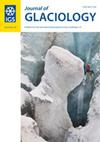2001年至2020年尼安春坦古拉山脉西部冰川反照率变化及其驱动因素
IF 2.6
3区 地球科学
Q2 GEOGRAPHY, PHYSICAL
引用次数: 0
摘要
冰川表面反照率主导着冰川能量平衡,从而强烈影响冰川质量平衡。在过去的二十年里,尼安春坦古拉山脉西部的冰川经历了巨大的质量损失,但冰川反照率及其驱动因素的长期变化却鲜为人知。在这项研究中,我们利用MODIS反射率数据检索了冰川反照率,以表征2001年至2020年反照率的时空变化。气温、降雨量、降雪量和吸光杂质的沉积被评估为观测到的冰川反照率变化的潜在驱动因素。结果表明:(1)冰川反照率经历了较大的年际波动,WNM的平均反照率为0.552±0.002,并有0.0443±2×10−4 dec−1的明显下降趋势。秋季和平衡线海拔附近的下降速度最快,表明融化季节延长,消融区域向更高海拔扩展;(2) 当地气象和LAIs沉积是冰川反照率变化的主要驱动因素,但由于冰川过程的不同,它们对季节反照率的影响不同。由于冰川消融,气温和液态和固态降水之间的平衡都会影响夏季和秋季的反照率。由于雪的升华和变质作用,气温是春季和冬季反照率的主要驱动因素,而西风带携带的降雪量较少,对这两个季节反照率影响有限。LAI主要影响春季反照率,因为春季的高浓度和南风。这些发现强调了冰川反照率变化的重要性,以及当地气象和LAI沉积在决定这种变化中的关键作用,这些变化在冰川学和冰冻圈过程中发挥着重要作用。本文章由计算机程序翻译,如有差异,请以英文原文为准。
Changes in glacier albedo and the driving factors in the Western Nyainqentanglha Mountains from 2001 to 2020
Abstract Glacier surface albedo dominates glacier energy balance, thus strongly affecting the glacier mass balance. Glaciers in the Western Nyainqentanglha Mountains (WNM) experienced large mass losses in the past two decades, but long-term changes of glacier albedo and its drivers are less understood. In this study, we retrieved glacier albedo with MODIS reflectance data to characterize the spatiotemporal variability of albedo from 2001 to 2020. Air temperature, rainfall, snowfall and deposition of light-absorbing impurities (LAIs) were evaluated as potential drivers of the observed variability in glacier albedo. The results showed that: (1) the glacier albedo experienced large inter-annual fluctuations, with the mean albedo being 0.552 ± 0.002 and a clear decreasing trend of 0.0443 ± 2 × 10−4 dec−1 in the WNM. The fastest decline was observed in autumn and in the vicinity of the equilibrium line altitude, indicating an extended melt season and an expansion of the ablation region to higher elevation; (2) local meteorology and LAIs deposition are the main drivers of glacier albedo change, but their effects on seasonal albedos are different due to different glacier processes. Both air temperature and the balance between liquid and solid precipitation affect summer and autumn albedos due to glacier ablation. Air temperature is the main driver of spring and winter albedos due to sublimation and metamorphism of snow, while snowfall carried by westerlies has limited influence on these two seasonal albedos due to less snowfall. LAIs mainly affect spring albedo due to high concentration coupled with the southerly wind in spring. These findings highlight the significance of changes in glacier albedo and the key role of local meteorology and LAIs deposition in determining such changes, which play an important role in glaciological and cryosphere processes.
求助全文
通过发布文献求助,成功后即可免费获取论文全文。
去求助
来源期刊

Journal of Glaciology
地学-地球科学综合
CiteScore
5.80
自引率
14.70%
发文量
101
审稿时长
6 months
期刊介绍:
Journal of Glaciology publishes original scientific articles and letters in any aspect of glaciology- the study of ice. Studies of natural, artificial, and extraterrestrial ice and snow, as well as interactions between ice, snow and the atmospheric, oceanic and subglacial environment are all eligible. They may be based on field work, remote sensing, laboratory investigations, theoretical analysis or numerical modelling, or may report on newly developed glaciological instruments. Subjects covered recently in the Journal have included palaeoclimatology and the chemistry of the atmosphere as revealed in ice cores; theoretical and applied physics and chemistry of ice; the dynamics of glaciers and ice sheets, and changes in their extent and mass under climatic forcing; glacier energy balances at all scales; glacial landforms, and glaciers as geomorphic agents; snow science in all its aspects; ice as a host for surface and subglacial ecosystems; sea ice, icebergs and lake ice; and avalanche dynamics and other glacial hazards to human activity. Studies of permafrost and of ice in the Earth’s atmosphere are also within the domain of the Journal, as are interdisciplinary applications to engineering, biological, and social sciences, and studies in the history of glaciology.
 求助内容:
求助内容: 应助结果提醒方式:
应助结果提醒方式:


